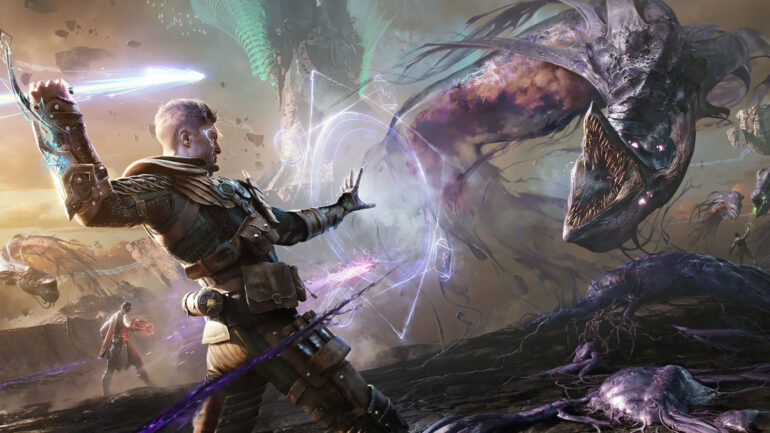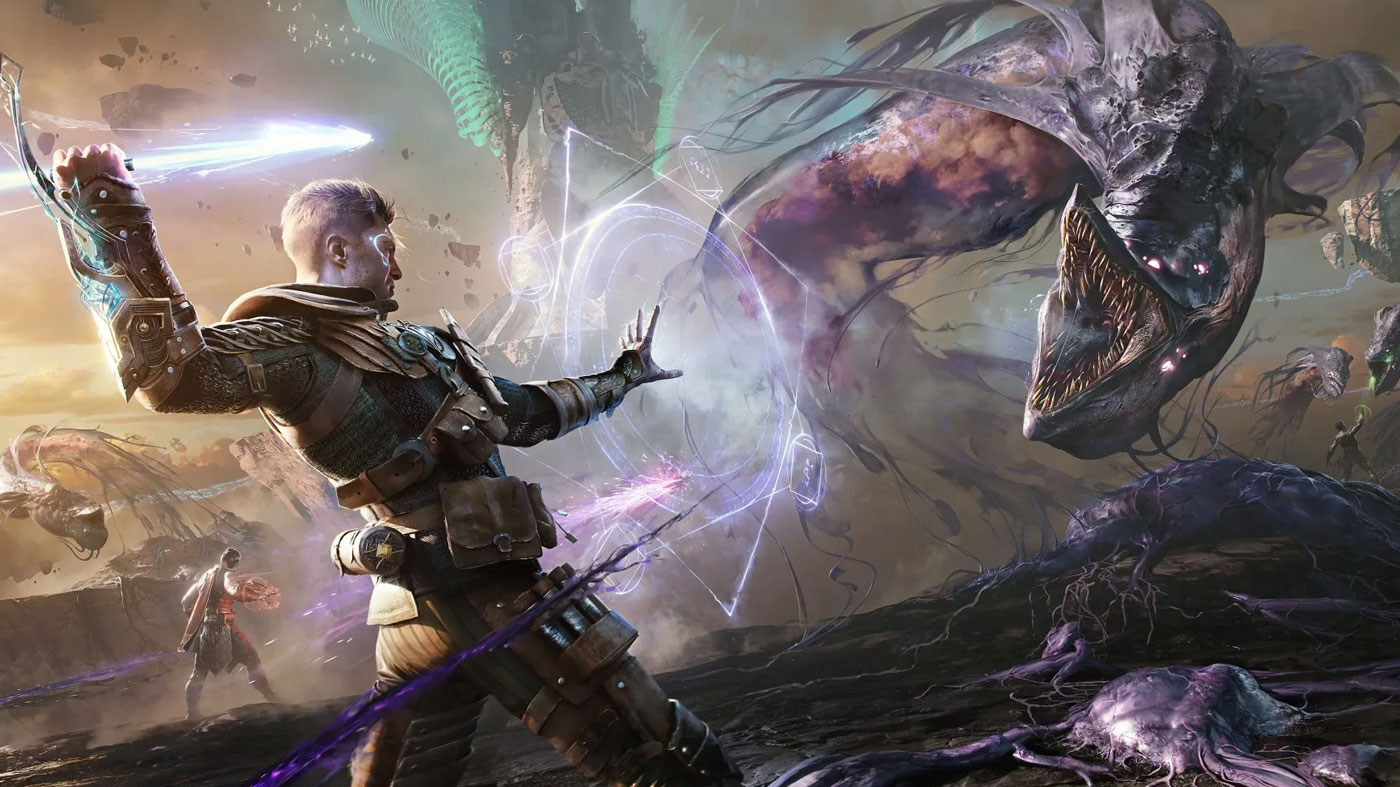The EA Originals brand has done an excellent job so far – Wild Hearts was an unexpected favourite of mine earlier this year, and It Takes Two took home many accolades in its year of release. When EA Originals was first established, one of the key tenets underpinning it was the commitment to extraordinary worlds. Immortals of Aveum makes good on that promise. It’s a superbly crafted world bolstered by some clever gameplay with much more depth than I’d ever expected.
Immortals of Aveum takes place in the world of Aveum, a world shaped and influenced by many wars and conflicts over the control of magic. Aveum was originally five kingdoms, but the war has reduced this to two. You’re Jak, a mage who manifests his power later in life as he’s thrown into conflict to defend his home. It’s a simplistic story that’s elevated by a well-established setting.
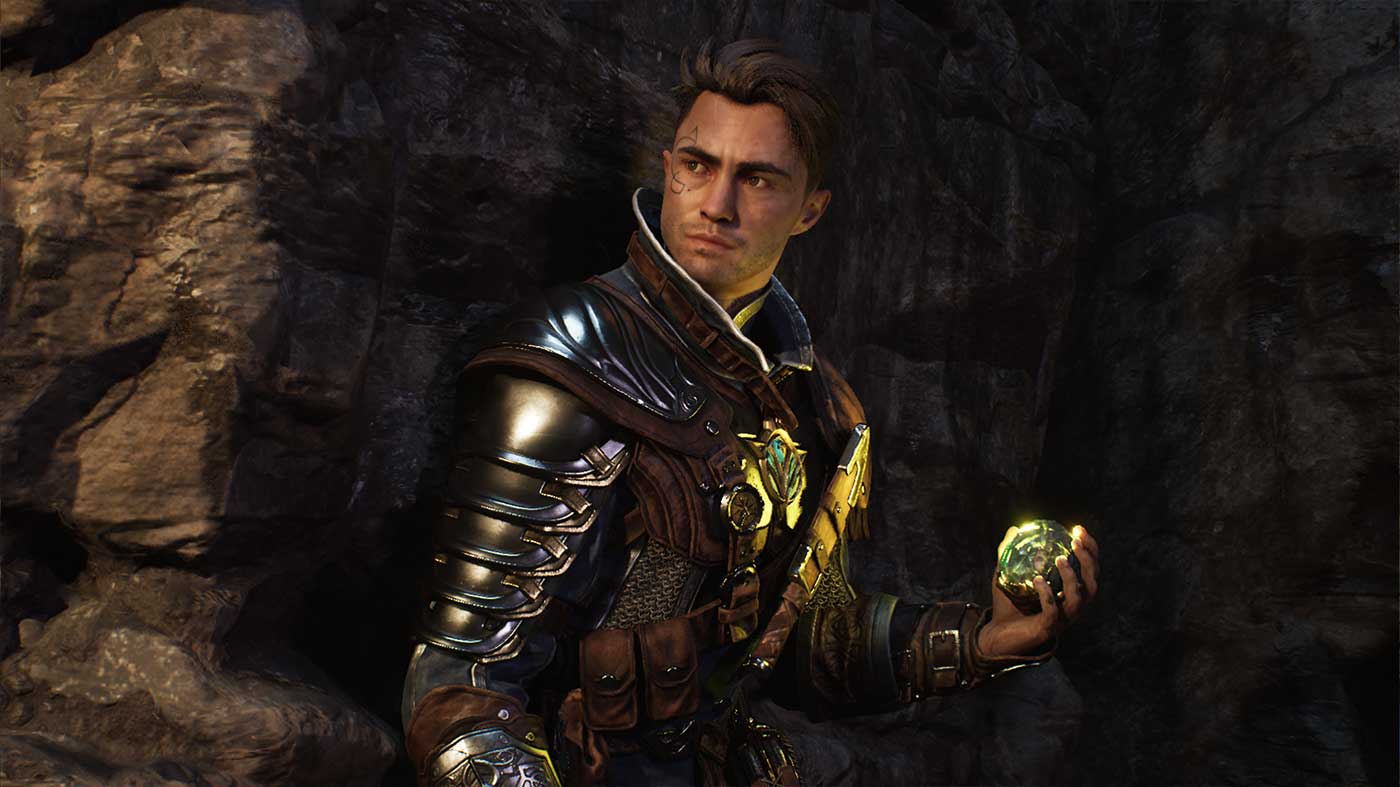
The depth of detail in Immortal of Aveum’s worldbuilding is combined with a solid story to provide a surprisingly engaging experience. Perhaps my expectations were already low, but almost every twist and turn the narrative threw at me only encouraged me to keep playing. Admittedly, there was one incredibly predictable plot point – perhaps even knowingly, given Jak himself comments on it – but overall, it’s a new story in a new world that’s satisfying to get through. Getting so much right in this area is a real achievement for a new IP.
At first glance, Immortals of Aveum looks like a typical first-person shooter, albeit with spells and charms instead of traditional weaponry. But as you dive deeper into the world of Aveum, it’s obvious the game has a few tricks up its sleeve. It combines the cinematic and bombastic set pieces of Call of Duty with the fast and frenetic combat of games like the recent Doom sequels. It’s not a groundbreaking game when examining its singular parts, but it’s the way these systems come together that makes Immortals of Aveum unique.

The game splits its magic into three categories; Red, Blue and Green. Red magic is more erratic and destructive. Blue magic is more precise in nature. Green magic is still damaging but has typically inflicted buffs and debuffs. Some mages are given control over each of these types in the world of Aveum, but Jak can control all three. Each “weapon” Jak can equip is called a Sigil, an enchanted bracer that affects how Jak conjures each type of this magic. You’ll find spells typically analogous to weapons you’d find in a typical shooter – the Javelin serves as a long-range sniper rifle, for example.
The Sigil system replaces weapons as you’d expect, but the other charms and trinkets that Jak finds can serve a purpose in both battle and exploration. Lash is a magical chain powered by blue magic that allows Jak to reach new areas, similar to a grappling hook. But it can also close the distance between yourself and enemies in combat. Limpets, on the other hand, can slow down fast-moving enemies so that you can target their weak points easily. When exploring, though, they’ll slow down fast-moving objects to help Jak solve puzzles or traverse to new areas.
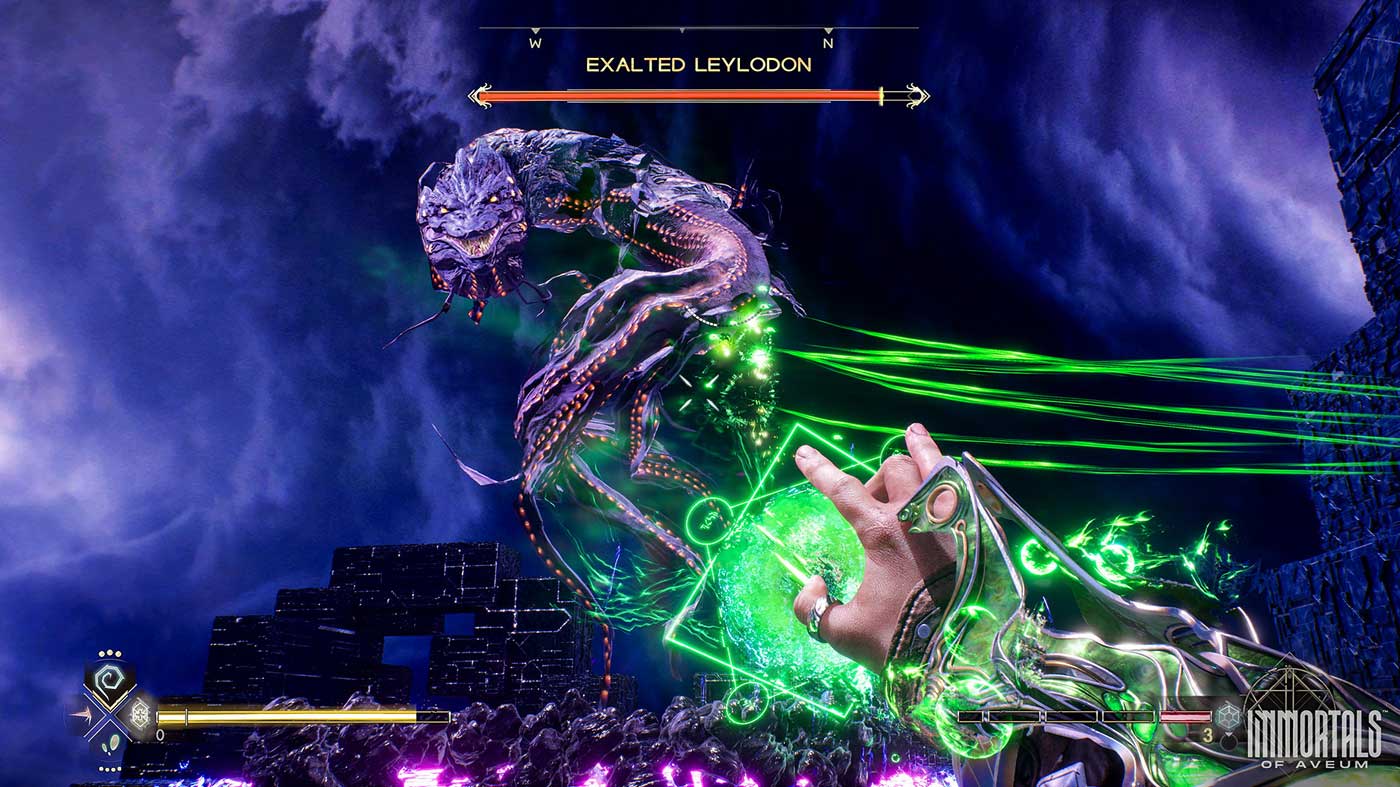
In terms of combat, while encounters are simple early on, they quickly ratchet up in intensity to force you to utilise all your different spell types. It’s a joy to play – and while it’s not as gratuitously violent as its contemporaries – it’s a battle system that’s immediately compelling. There’s nothing more sublime than blocking spells with your shield spell, cancelling an enemy’s cast with your disrupt spell, and launching homing magical missiles to home in on your enemy. It’s these moments where you combine your abilities where Immortals of Aveum is at its best, especially on the higher difficulty.
GET IT ON AMAZON FOR $83.99 WITH FREE SHIPPING
The game allows players to decompress between these battles, though. To nobody’s surprise, I’m a huge Metroid fan, so I don’t say this lightly, but the exploration in Immortals of Aveum feels very reminiscent of Metroid Prime. Jak can revisit areas between story chapters to use newly found abilities to uncover upgrades and gear for himself. The exploration during the story chapters, especially the more “dungeon” like ones, also flows similarly to levels in a Metroid game, using your abilities to solve puzzles and progress through an environmental blockade.
Backtracking is sometimes a controversial game design choice, but you can engage with it as much as you want in Immortals of Aveum. It’s almost essential for greater difficulties, as it’ll allow you to regularly deal with the hordes of enemies the game throws at you.

Progression is thusly handled by a mix of gear management and skill trees. It’s nothing you haven’t seen in almost every action RPG before this one. Skill trees are powered by skill points earned by defeating enemies or solving puzzles in the overworld. Gear is awarded similarly but can be upgraded at forges peppered throughout the game’s open-level maps. And while Immortals of Aveum is not a games-as-a-service affair, my only complaint is that the loot system feels lifted straight out of one. I’d finish many missions with heaps of similar rings but with minor stat differences. It’s not as egregious as games built around this system, like The Division or Destiny, but it does feel like there’s too much needless gear in the game.
Immortals of Aveum is also one of the first games to release powered by Unreal Engine 5.1. However, the result is slightly mixed on consoles. Targeting a solid sixty frames per second, the game does achieve this, but the density of effects means that the resolution falters. I’ve never been a pixel counter, but while the world is detail-rich and the lighting is as mesmerising as ever, Aveum has a softer visual look to achieve its solid framerate. For me, it’s targeting a sweet spot as the art direction is so strong and performance so stable, but if you’re sensitive to this kind of thing, it bears mentioning.

But coming out of left field, the original score is genuinely fantastic and one of my favourite aspects of the game’s presentation. Composed by a pair of relative newcomers, the score is a bizarrely unique collection of music that complements the chaotic battles and gives a great ambience to the open environments you’ll be exploring. It’s an eclectic mix of lo-fi electro-trap, and it bizarrely meshed well with the medieval-tinged sci-fi world of Aveum. I rarely speak at length about a game’s score this much, but Immortals of Aveum’s is one of the best and most unique I’ve heard in a game for a while.
Involving film performers in games is always a question mark over a project, and Immortals of Aveum is no different. Darren Barnet lends himself well to Jak, landing most of the game’s comedic moments, although some do cross the line into cringe. The rest of the cast turns in pretty decent performances, though I’ll always love Gina Torres in anything she appears in. She was excellent in Serenity and Suits, and she’s great here with some real presence.
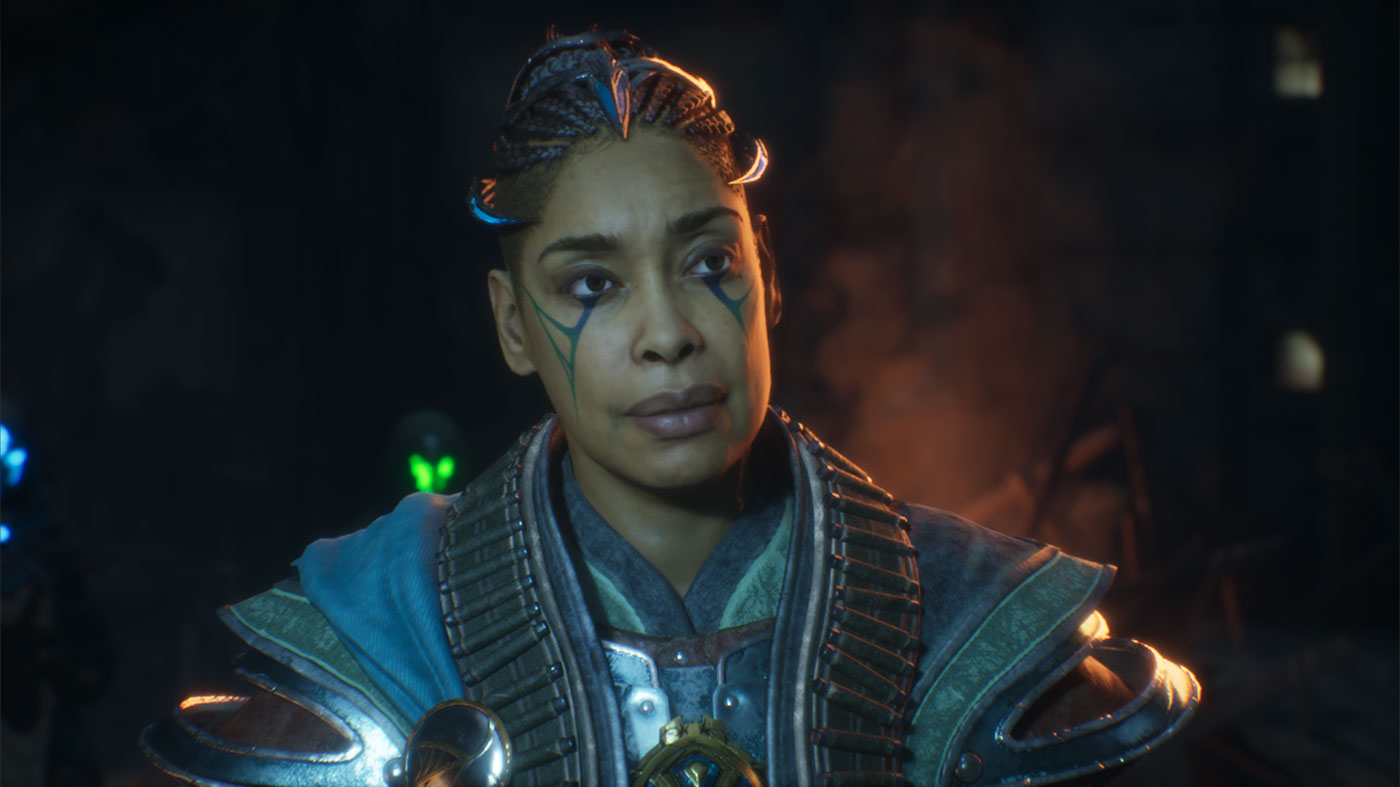
But what really strikes me overall about Immortals of Aveum is just its passion and charm. You can tell that the team has painstakingly gone to so much effort to create a world that’s a joy to exist in and a game that feels complete and fulfilling. So much could’ve gone wrong here, especially from a debut studio, like lack of enemy variety, tedious battle system, or an unfulfilling short journey. But Immortals of Aveum isn’t any of that. It’s a substantial journey from beginning to end that feels just as big a budget as its AAA contemporaries but without the chaff that commonly weighs them down.


